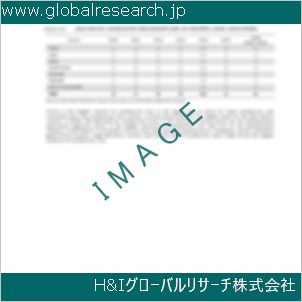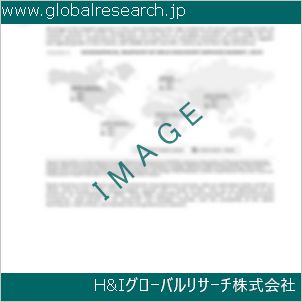Table of Contents
1 Industry Overview of Lithium
1.1 Definition and Specifications of Lithium
1.1.1 Definition of Lithium
1.1.2 Specifications of Lithium
1.2 Classification of Lithium
1.3 Applications of Lithium
1.3.1 Nuclear Application
1.3.2 Non-Nuclear Application
1.4 Industry Chain Structure of Lithium
1.5 Industry Overview and Major Regions Status of Lithium
1.5.1 Industry Overview of Lithium
1.5.2 Global Major Regions Status of Lithium
1.6 Industry Policy Analysis of Lithium
1.7 Industry News Analysis of Lithium
2 Manufacturing Cost Structure Analysis of Lithium
2.1 Raw Material Suppliers and Price Analysis of Lithium
2.2 Equipment Suppliers and Price Analysis of Lithium
2.3 Labor Cost Analysis of Lithium
2.4 Other Costs Analysis of Lithium
2.5 Manufacturing Cost Structure Analysis of Lithium
2.6 Manufacturing Process Analysis of Lithium
3 Technical Data and Manufacturing Plants Analysis of Lithium
3.1 Capacity and Commercial Production Date of Global Lithium Major Manufacturers in 2023
3.2 Manufacturing Plants Distribution of Global Lithium Major Manufacturers in 2023
3.3 R&D Status and Technology Source of Global Lithium Major Manufacturers in 2023
3.4 Raw Materials Sources Analysis of Global Lithium Major Manufacturers in 2023
4 Capacity, Production and Revenue Analysis of Lithium by Regions, Types and Manufacturers
4.1 Global Capacity, Production and Revenue of Lithium by Regions 2019-2024
4.2 Global and Major Regions Capacity, Production, Revenue and Growth Rate of Lithium 2019-2024
4.3 Global Capacity, Production and Revenue of Lithium by Types 2019-2024
4.4 Global Capacity, Production and Revenue of Lithium by Manufacturers 2019-2024
5 Price, Cost, Gross and Gross Margin Analysis of Lithium by Regions, Types and Manufacturers
5.1 Price, Cost, Gross and Gross Margin Analysis of Lithium by Regions 2019-2024
5.2 Price, Cost, Gross and Gross Margin Analysis of Lithium by Types 2019-2024
5.3 Price, Cost, Gross and Gross Margin Analysis of Lithium by Manufacturers 2019-2024
6 Consumption Volume, Consumption Value and Sale Price Analysis of Lithium by Regions, Types and Applications
6.1 Global Consumption Volume and Consumption Value of Lithium by Regions 2019-2024
6.2 Global and Major Regions Consumption Volume, Consumption Value and Growth Rate of Lithium 2019-2024
6.3 Global Consumption Volume and Consumption Value of Lithium by Types 2019-2024
6.4 Global Consumption Volume and Consumption Value of Lithium by Applications 2019-2024
6.5 Sale Price of Lithium by Regions 2019-2024
6.6 Sale Price of Lithium by Types 2019-2024
6.7 Sale Price of Lithium by Applications 2019-2024
6.8 Market Share Analysis of Lithium by Different Sale Price Levels
7 Supply, Import, Export and Consumption Analysis of Lithium
7.1 Supply, Consumption and Gap of Lithium 2019-2024
7.2 Global Capacity, Production, Price, Cost, Revenue, Supply, Import, Export and Consumption of Lithium 2019-2024
7.3 USA Capacity, Production, Price, Cost, Revenue, Supply, Import, Export and Consumption of Lithium 2019-2024
7.4 EU Capacity, Production, Price, Cost, Revenue, Supply, Import, Export and Consumption of Lithium 2019-2024
7.5 China Capacity, Production, Price, Cost, Revenue, Supply, Import, Export and Consumption of Lithium 2019-2024
7.6 Japan Capacity, Production, Price, Cost, Revenue, Supply, Import, Export and Consumption of Lithium 2019-2024
8 Major Manufacturers Analysis of Lithium
8.1 Manufacturer One
8.1.1 Company Profile
8.1.2 Product Picture and Specifications
8.1.2.1 Type I
8.1.2.2 Type II
8.1.2.3 Type III
8.1.3 Capacity, Production, Price, Cost, Gross and Revenue
8.1.4 Contact Information
8.2 Manufacturer Two
8.2.1 Company Profile
8.2.2 Product Picture and Specifications
8.2.2.1 Type I
8.2.2.2 Type II
8.2.2.3 Type III
8.2.3 Capacity, Production, Price, Cost, Gross and Revenue
8.2.4 Contact Information
8.3 Manufacturer Three
8.3.1 Company Profile
8.3.2 Product Picture and Specifications
8.3.2.1 Type I
8.3.2.2 Type II
8.3.2.3 Type III
8.3.3 Capacity, Production, Price, Cost, Gross and Revenue
8.3.4 Contact Information
8.4 Manufacturer Four
8.4.1 Company Profile
8.4.2 Product Picture and Specifications
8.4.2.1 Type I
8.4.2.2 Type II
8.4.2.3 Type III
8.4.3 Capacity, Production, Price, Cost, Gross and Revenue
8.4.4 Contact Information
8.5 Manufacturer Five
8.5.1 Company Profile
8.5.2 Product Picture and Specifications
8.5.2.1 Type I
8.5.2.2 Type II
8.5.2.3 Type III
8.5.3 Capacity, Production, Price, Cost, Gross and Revenue
8.5.4 Contact Information
…
9 Marketing Trader or Distributor Analysis of Lithium
9.1 Marketing Channels Status of Lithium
9.2 Traders or Distributors with Contact Information of Lithium by Regions
9.3 Ex-work Price, Channel Price and End Buyer Price Analysis of Lithium
9.4 Regional Import, Export and Trade Analysis of Lithium
10 Industry Chain Analysis of Lithium
10.1 Upstream Major Raw Materials Suppliers Analysis of Lithium
10.1.1 Major Raw Materials Suppliers with Contact Information Analysis of Lithium
10.1.2 Major Raw Materials Suppliers with Supply Volume Analysis of Lithium by Regions
10.2 Upstream Major Equipment Suppliers Analysis of Lithium
10.2.1 Major Equipment Suppliers with Contact Information Analysis of Lithium
10.2.2 Major Equipment Suppliers with Product Pictures Analysis of Lithium by Regions
10.3 Downstream Major Consumers Analysis of Lithium
10.3.1 Major Consumers with Contact Information Analysis of Lithium
10.3.2 Major Consumers with Consumption Volume Analysis of Lithium by Regions
10.4 Supply Chain Relationship Analysis of Lithium
11 Development Trend of Analysis of Lithium
11.1 Capacity, Production and Revenue Forecast of Lithium by Regions and Types
11.1.1 Global Capacity, Production and Revenue of Lithium by Regions 2024-2029
11.1.2 Global and Major Regions Capacity, Production, Revenue and Growth Rate of Lithium 2024-2029
11.1.3 Global Capacity, Production and Revenue of Lithium by Types 2024-2029
11.2 Consumption Volume and Consumption Value Forecast of Lithium by Regions, Types and Applications
11.2.1 Global Consumption Volume and Consumption Value of Lithium by Regions 2024-2029
11.2.2 Global and Major Regions Consumption Volume, Consumption Value and Growth Rate of Lithium 2024-2029
11.2.3 Global Consumption Volume and Consumption Value of Lithium by Types 2024-2029
11.2.4 Global Consumption Volume and Consumption Value of Lithium by Applications 2024-2029
11.3 Supply, Import, Export and Consumption Forecast of Lithium
11.3.1 Supply, Consumption and Gap of Lithium 2024-2029
11.3.2 Global Capacity, Production, Price, Cost, Revenue, Supply, Import, Export and Consumption of Lithium 2024-2029
11.3.3 USA Capacity, Production, Price, Cost, Revenue, Supply, Import, Export and Consumption of Lithium 2024-2029
11.3.4 EU Capacity, Production, Price, Cost, Revenue, Supply, Import, Export and Consumption of Lithium 2024-2029
11.3.5 China Capacity, Production, Price, Cost, Revenue, Supply, Import, Export and Consumption of Lithium 2024-2029
11.3.6 Japan Capacity, Production, Price, Cost, Revenue, Supply, Import, Export and Consumption of Lithium 2024-2029
12 New Project Investment Feasibility Analysis of Lithium
12.1 New Project SWOT Analysis of Lithium
12.2 New Project Investment Feasibility Analysis of Lithium
13 Conclusion of the Global Lithium (CAS 7439-93-2) Industry 2024 Market Research Report
| ※参考情報 リチウム(Lithium)は、周期表でリチウムの原子番号は3に位置する元素であり、記号はLiです。金属元素の中で最も軽く、軟らかく、銀白色の光沢を持つ特性があります。リチウムは1866年にスウェーデンの化学者ヨハン・アウグスト・アーリによって発見されました。リチウムは自然界においては主に鉱石や塩水の中に存在し、地球上ではその含有量は比較的少ないものの、特定の鉱石から効率的に抽出され、様々な産業で利用されています。 リチウムの特徴として、非常に軽量であり、化学的に活発な金属であることが挙げられます。リチウムは水と反応すると水素ガスを発生し、その反応は非常に激しいです。また、酸素や窒素とも反応しやすく、特に空気中では酸化しやすい性質を持っています。このため、リチウムは通常、石油や他の不活性な媒体内に保存され、取り扱う際には注意が必要です。 リチウムにはいくつかの種類があり、気体や液体には存在しません。主な形態としては、金属リチウムやリチウムイオン化合物、リチウム塩が挙げられます。金属リチウムは特に高い熱伝導性を持っており、冷却材としての用途にも利用されています。また、リチウムイオン化合物(例えばリチウムコバルト酸化物やリチウム鉄リン酸塩など)は、リチウムイオン電池の主要成分として広く利用されています。 リチウムの用途として、最も知られているのはリチウムイオン電池です。これらのバッテリーは、スマートフォン、ノートパソコン、電気自動車、エネルギー貯蔵システムなど、さまざまな電子機器に使用され、軽量かつ高いエネルギー密度が求められる分野で重宝されています。リチウムイオン電池は、充電効率が高く、長寿命であるため、再生可能エネルギーシステムの一部としても注目されています。 また、リチウムは医療分野においても利用されます。特に、双極性障害の治療に使用されるリチウム塩は、その気分安定化作用が知られています。リチウムの摂取により、神経伝達物質のバランスが整えられ、症状の緩和が期待できます。医療用途において使用されるリチウム製剤は、医師の指導の下で厳重に管理される必要があります。 さらに、リチウムはガラスやセラミックの製造、潤滑油としての添加剤、そして航空宇宙技術においても利用されています。リチウムは非常に熱伝導性が高く、耐熱性にも優れるため、特定の用途において非常に有用です。また、リチウム化合物は、特に高温超伝導体や特殊な化学反応の触媒としても研究が進められています。 最近では、リチウム資源の持続可能な開発が重要な関心事となっています。電気自動車や再生可能エネルギーの普及に伴い、リチウムの需要は増加していますが、その採掘や生産は環境に影響を与える可能性があります。リチウムの採掘は主に南アメリカの塩湖やオーストラリアの鉱山から行われており、水資源の消費や生態系への影響が懸念されています。これに対処するため、リサイクル技術の発展や新しい採掘技術の開発が求められています。 将来的には、リチウムイオン電池の改良や、新しいタイプの電池(例えば固体電池)への移行が期待されており、リチウムの利用法も変化すると予想されます。また、リチウムを使用しない代替エネルギー貯蔵技術の研究も進められており、より持続可能な社会の実現に向けて様々なアプローチが取られています。 リチウムはその独特な性質と多様な用途から、現代の技術と社会において重要な役割を果たしています。この元素の特性を理解し、持続可能な利用方法を模索することは、今後の技術革新と環境保護において非常に重要な課題であると言えるでしょう。リチウムの研究と応用は、今後も多方面で発展し続けると考えられ、技術革新を通じて新しい価値創造が期待されています。 |
❖ 免責事項 ❖
http://www.globalresearch.jp/disclaimer












